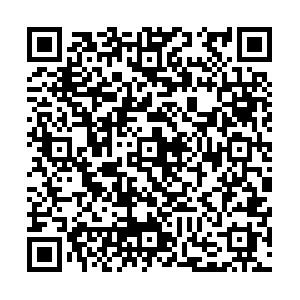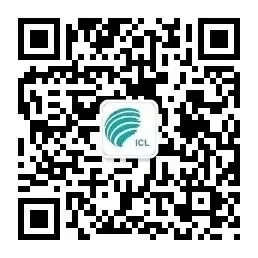“Translation Field” in Polyphonic Harmony: Multiple Subjects and Their Practices in the Hindi Translation of Chinese Literature (1978—1995)
-
摘要: 在中印文学关系研究领域,20世纪后期的印译中国文学是一个明显短板。由“正向翻译”统摄的主流翻译观念和印度本土语种资料的缺失,是造成这一短板的主要原因。若要矫正这一问题,就需将“印译中国文学”中“印”的含义从惯常理解中的国别/国籍框架(由印度人在印度翻译)转移至语言框架(译入印度语言),由此将那些从事汉籍印译的非印度主体和海外印度主体揽入视野,同时将本土语种一手资料的系统搜集、爬梳和研读作为研究的基本前提。本文对1978—1995年中国文学在印地语界的译介主体及其实践进行深描式考察,揭示中印关系正常化之后双边文学交流的发展态势和特征,尤其是在印度汉学界主导的学术型翻译模式成为主流之前中国文学印译的主要机制及其成效。该时期的中国文学印译虽呈现出机构与个体、中国与印度、独立与联合、译入与译出等不同维度上的主体多元性,但这些主体并非以彼此孤立的方式存在,而是身处一个由多重关系构成的“翻译场”中。该翻译场以众声合鸣的主体间关系为特征,其中既有协调的和音,也有不协调的噪音,很多时候则表现为一种和中有分、异中有同的杂语质地。看似异质乃至对立的翻译主体关联在同一张行动网络之中,他们经由趋同与求异的动态进程,将数目可观、品类多元的中国文学译本带到印度读者身边。Abstract: In the scholarly field of Sino-Indian literary relations, the translation of Chinese literature into Indian languages during the late twentieth century proves to be a significant lacuna, which can be ascribed to the predominance of the idea of “direct translation” and the lack of original materials in the indigenous languages of India. Should this issue be calibrated, the notion of “India” in “Indian translation of Chinese literature” needs to be resituated from a nationality-based framework (i.e. a translation performed by Indians and in India) to a language-based framework (i.e. a translation into Indian languages). This helps bring in view various non-Indian subjects engaged in the translation of Chinese works as well as Indian subjects who translated on foreign soil. At the same time, it is imperative to make systematic collection, sorting, and study of local-language materials a necessary premise for conducting research on this topic. This paper examines the multiple subjects and their practices in the translation and introduction of Chinese literature in Hindi from 1978 to 1995, seeking to unveil the trends and characteristics of bilateral literary exchanges after the normalization of Sino-Indian relations. Particular efforts are made to demonstrate the mechanisms and effectiveness of the translation of Chinese literature into Indian languages before Indian sinologists began to loom large in this field. Although the translation of Chinese literature into Indian languages during this period is characterized by a salient diversity of subjects dwelling at seemingly opposite ends (e.g. institution and individual, China and India, independent translation and cooperative translation, inward translation and outward translation), these subjects do not exist in isolation from each other but are incorporated in a “translation field” comprising multiple relationships. This translation field is distinctively polyphonic, where harmonious chords and discordant noises coexist and often result in a certain degree of heteroglossia. It is these polyphonic relationships that connect heterogeneous and even ostensibly antagonistic translational subjects in a network of action, generating a substantial and diverse corpus of Chinese literary translations for Indian readers through dynamic processes of alignment and differentiation.
-
[1] . 皮埃尔·布尔迪厄《实践理论大纲》,高振华、李思宇译,中国人民大学出版社,2017年。 [2] . 陈建功《丹凤眼》,《小说月报》1980年第10期。 [3] . 戴延年、陈日浓编《中国外文局五十年:大事记1》,新星出版社,1999年。 [4] . 何明星《中华人民共和国外文图书出版发行编年史(1949—1979)》(上),学习出版社,2013年。 [5] . 贾岩《20世纪50年代印度的中国文学评论——基于多媒介视角的考察》,《复旦外国语言文学论丛》2024年第3期。 [6] . 贾岩《20世纪50年代中国现代文学在印度的译介与接受初探》,《东方语言文化论丛》(第35辑),世界图书出版广东有限公司,2016年。 [7] . 姜景奎《现当代印度文学汉译:“水平翻译”与“同一性他者”构建》,《中国语言文学研究》2019年春之卷。 [8] . 马士奎、倪秀华《塑造自我文化形象——中国对外文学翻译研究》,中国人民大学出版社,2018年。 [9] . 倪培耕、钱王驷《文学,人间感情的沟通者——访问现代印度作家阿葛叶》,《世界文学》1987年第4期。 [10] . 倪秀华《1949—1966年中国文学对外翻译研究》,广州出版社,2021年。 [11] . 潘文国《译入与译出——谈中国译者从事汉籍英译的意义》,《中国翻译》2004年第2期。 [12] . 郁龙余、刘朝华《中外文学交流史:中国—印度卷》,山东教育出版社出版,2014年。 [13] . 郑延国《合译:佛经翻译的一大特色》,《现代外语》1995年第4期。 [14] . 郑晔《国家译介行为论:英文版〈中国文学〉的翻译、出版与接受》,南开大学出版社,2021年。 [15] . Yogesh Bhatnagar, “Kam Mahatvapurn”, Hans, 6 (1995). [16] . Deng Bing, trans., Devendra Chaubey, ed., Samkalin Chini Kahaniyan, Nayi Dilli: Ayan Prakashan, 1993. [17] . Pierre Bourdieu, The Logic of Practice, trans. Richard Nice, Cambridge: Polity Press, 1990. [18] . Ajay Brahmatmaj, “Dohre Ajnan se Chhankar”, Hans, 3 (1995). [19] . Ajay Brahmatmaj, trans., Chin ki Purskrit Kahaniyan (Pratham Khand), Nai Dilli: People's Publishing House, 1994. [20] . Michael Hutt, “Ganga Bahadur’s Books: Landmark Proletarian Novels and the Nepali Communist Movement”, Inter-Asia Cultural Studies 17, no.3 (2016). [21] . Trinetra Joshi, “Purvakathan”, Pahal, 32 (1987). [22] . Bonnie McDougall, Translation Zones in Modern China: Authoritarian Command versus Gift Exchange, Amherst, NY: Cambria Press, 2011. [23] . Francesca Orsini, “Literary Activism: Hindi Magazines, the Short Story and the World”, in Francesca Orsini, Neelam Srivastava & Laetitia Zecchini, eds., The Form of Ideology and the Ideology of Form: Cold War, Decolonization and Third World Print Cultures, Cambridge: Open Book Publishers, 2022. [24] . Nike K. Pokorn, Challenging the Traditional Axioms: Translation into A Non-mother Tongue, Amsterdam/Philadelphia: John Benjamins Publishing Company, 2005. [25] . Haraprasad Ray, “Prayas aur Upalabdhi ki Duriyan”, Hans, 5 (1995). [26] . Raghuvir Sahay, Raghuvir Sahay Rachnavali (Khand Chhe), ed. Suresh Sharma, Nayi Dilli: Rajkamal Prakashan, 2000. [27] . Manmohan Thakur, “Unka Agyan hi Unse Yah Likha Saka Hai”, Hans, 7 (1995). -

 点击查看大图
点击查看大图
计量
- 文章访问数: 140
- HTML全文浏览量: 40
- PDF下载量: 9
- 被引次数: 0



 下载:
下载:

